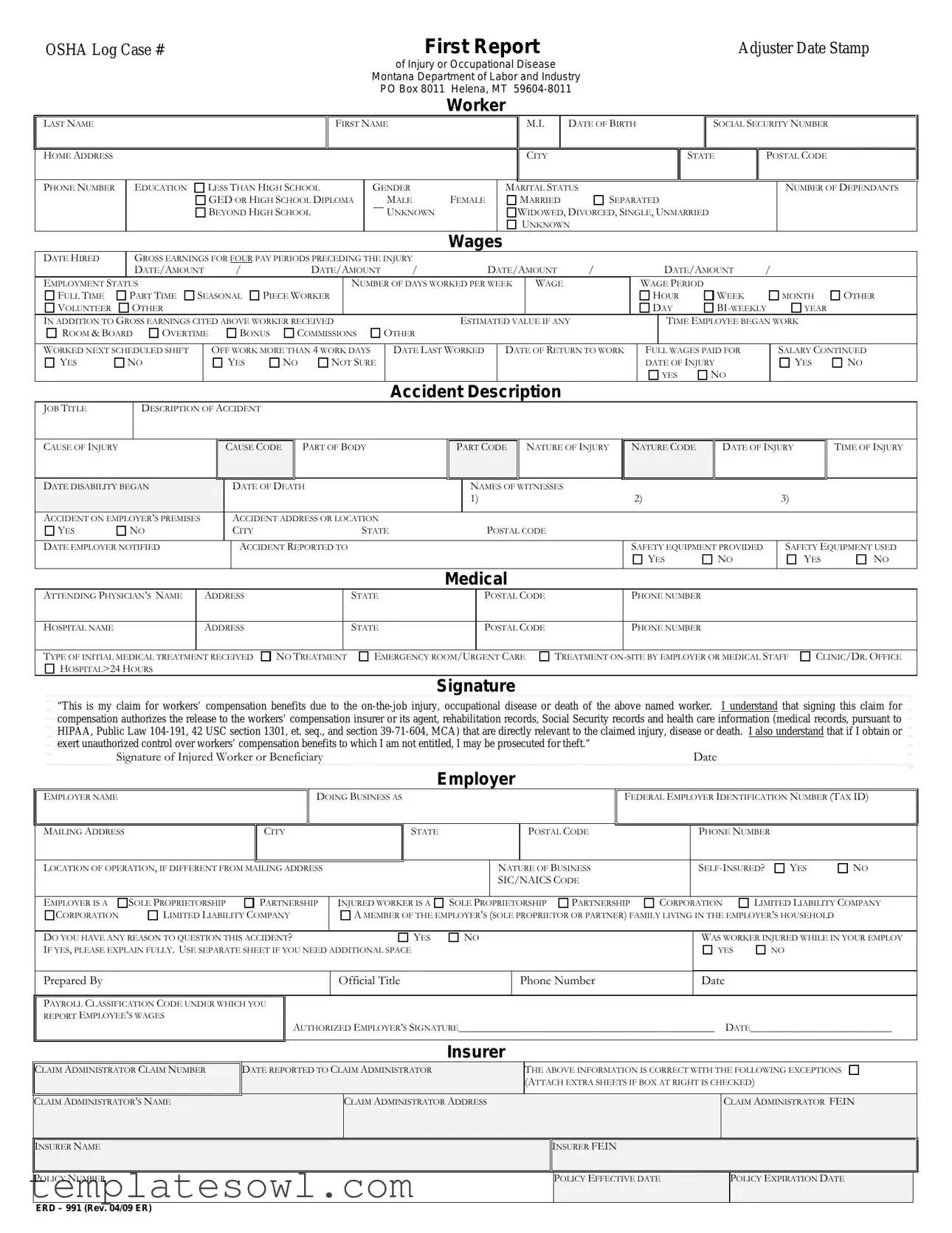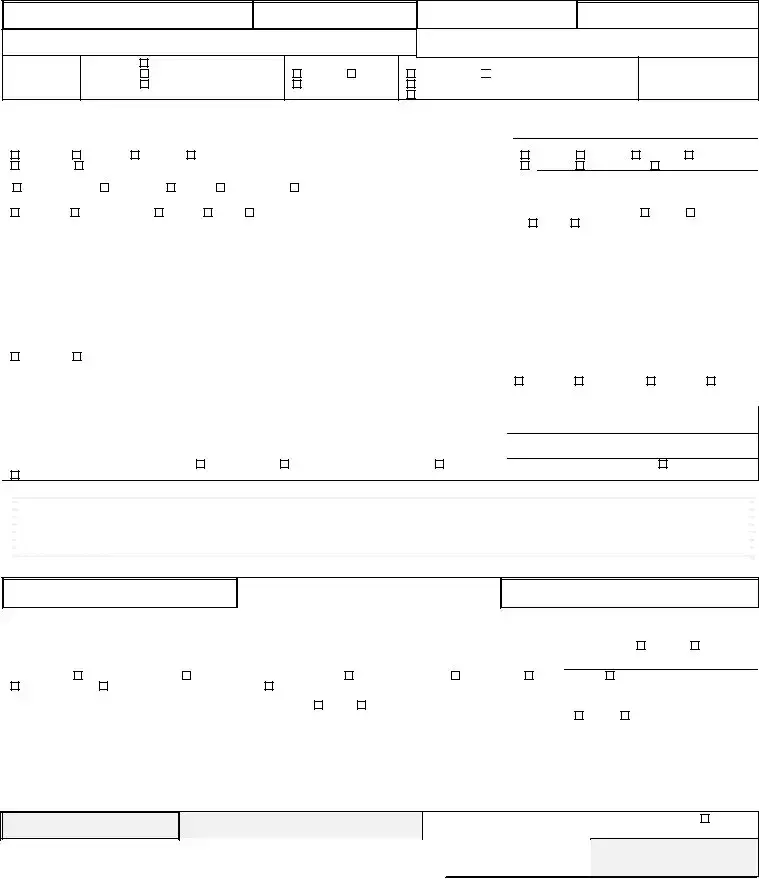What is the purpose of the ERD 991 form?
The ERD 991 form is used to report a worker’s compensation claim due to an on-the-job injury or illness in Montana. This form collects essential information about the worker, the details of the incident, and the nature of the injury to facilitate the claims process with the appropriate authorities.
Who needs to fill out the ERD 991 form?
Both the injured worker and the employer need to complete relevant sections of the ERD 991 form. The injured worker provides personal information and details about the injury, while the employer verifies employment details and the circumstances of the injury.
When should the ERD 991 form be submitted?
The form should be submitted as soon as possible after the injury occurs. Prompt reporting helps ensure that the injured worker can receive timely medical treatment and potentially compensation for lost wages and medical expenses. Generally, it is advised to submit the form within 30 days after the injury.
What information is required from the worker on the ERD 991 form?
Workers need to provide several details, including their name, date of birth, Social Security number, home address, education level, number of dependents, work status, and details about the injury. Specifically, the form asks for the date of injury, a description of the accident, and the nature of the injury, among other things.
How does the employer contribute to the ERD 991 form?
The employer must supply information such as the business name, address, nature of business, employee classification, and details about the injury's circumstances. The employer also signs the form, confirming the accuracy of the provided information.
What if there are discrepancies in the information submitted?
If discrepancies occur in the information provided, the form allows for exceptions to be noted. If box for exceptions is checked, additional sheets should be attached to clarify what information is incorrect or needs additional explanation.
What happens after the ERD 991 form is submitted?
Once the ERD 991 form is submitted to the appropriate claims administrator, they will review the information and determine the eligibility of the worker for benefits. The claimant will then be contacted regarding any further steps, which may include medical examination or additional documentation requests.
Is there a way to check the status of the claim after submitting the ERD 991 form?
Yes, once the ERD 991 form is submitted, workers can follow up with the claim administrator or their employer to inquire about the status of their claim. The claim administrator typically contacts the worker for any updates or requirements that might arise during the review process.
What if the worker’s injury does not require medical treatment?
Even if no medical treatment is necessary, the ERD 991 form should still be filed if the injury occurred in the workplace. This ensures that there is a record of the incident in case complications arise later or if the worker needs to seek compensation for any future medical expenses related to the injury.
Are there any penalties for providing false information on the ERD 991 form?
Yes, providing false information on the ERD 991 form can lead to serious repercussions. Workers may face prosecution for theft or fraud if they receive benefits to which they are not entitled. Therefore, it’s crucial to accurately complete and sign the form.



